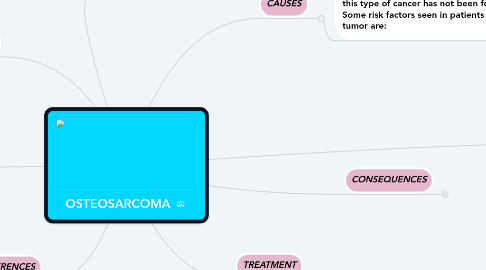OSTEOSARCOMA
por Maria Ramirez


1. SUGGESTIONS
1.1. A healthy lifestyle, with regular physical activity, good nutrition, and the non-use of narcotics can prevent any type of cancer. It's also important to consult the doctor, perform periodic exams and be attentive to the signals that the body shows us.
2. GLOSSARY
2.1. TISSUE: A group of similar cells forming a structural part of a living thing.
2.2. METASTASIS: The spread of disease-producing organisms or of cancer cells to other parts of the body.
2.3. SURGERY: The practice of treating diseases, injuries, etc, by performing medical operations or procedures.
2.4. DISEASES: Illness, sickness.
3. REFERENCES
3.1. www.cancer.org
3.2. www.wordreference.com
4. DEFINITION
4.1. Also called osteogenic sarcoma, is a type of cancer that starts in bones. The cancer cells look like early forms of bone cells that normally help make new bone tissue, but the bone tissue in an osteosarcoma is not as strong as that of normal bones.
5. O T H E R S: Other risk factors present in development of osteosarcoma are the radiation in bones or some bones diseases
6. CAUSES
6.1. Osteosarcoma is linked to numerous factors and conditions, however the main cause of this type of cancer has not been found. Some risk factors seen in patients with this tumor are:
6.1.1. A G E: The risk of obtaining osteosarcoma is greater between 10 and 30 years, especially in the growth stage. The risk of tumor formation may be linked to bone growth.
6.1.2. H E I G H T: People with osteosarcoma are usually taller for their age, so osteosarcoma may be linked to rapid bone growth.
6.1.3. G E N D E R: Is more common in females because they tend to develop and grow up faster than males.
6.1.4. R A C E: Osteosarcoma tends to develop more frequently in African, American and Hispanic people
